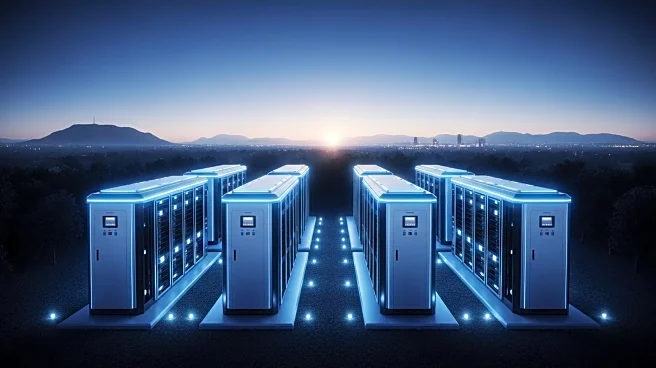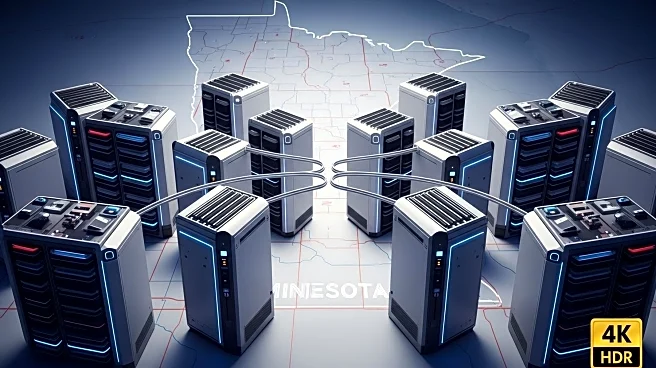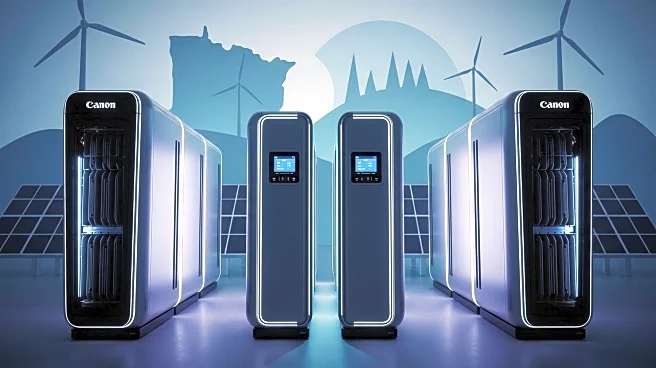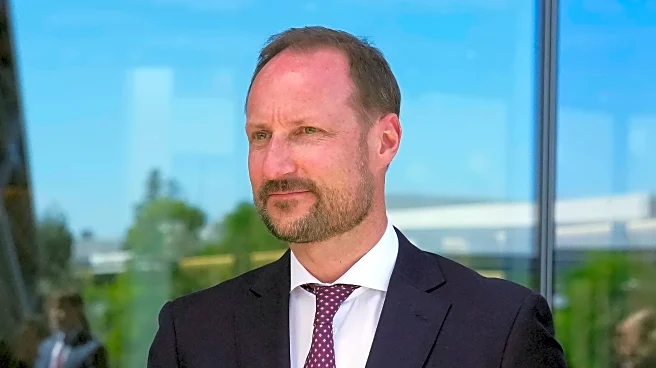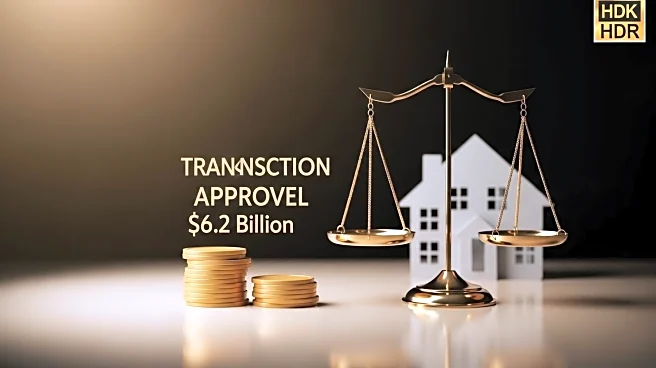What's Happening?
Xcel Energy has submitted a groundbreaking proposal to Minnesota regulators to establish a network of distributed battery resources across its grid. This initiative, known as the Capacity*Connect proposal, aims to integrate up to 200 MW of battery capacity into the system planning by 2028. The plan involves deploying batteries ranging from 1-3 MW at strategic locations, with local businesses, commercial sites, or nonprofit organizations hosting these batteries. The proposal seeks approval from the Minnesota Public Utilities Commission with a budget ranging from $152 million to $430 million, depending on the scale of deployment. Xcel Energy's approach is designed to optimize the distribution system, providing capacity and energy benefits without the need for extensive interconnection upgrades.
Why It's Important?
The proposal by Xcel Energy represents a significant shift in how utilities incorporate distributed energy resources into system planning and operations. By integrating distributed batteries, Xcel aims to enhance grid reliability and support economic growth while modernizing the energy infrastructure. This initiative is expected to complement existing plans for renewable and dispatchable generating resources, meeting the evolving needs of customers. The deployment of distributed batteries can lead to more efficient energy usage, reducing costs and environmental impact. Stakeholders such as local businesses and nonprofit organizations stand to benefit from hosting these resources, potentially gaining financial incentives and contributing to a more sustainable energy future.
What's Next?
If approved, Xcel Energy will collaborate with Sparkfund to evaluate, select, and secure battery sites, ensuring competitive procurement and effective operations. The program is part of Xcel's broader Upper Midwest Energy Plan, which targets the installation of 600 MW of energy storage by 2030. The success of this proposal could pave the way for similar initiatives across other regions, encouraging utilities to adopt distributed energy resources as a standard practice. The Minnesota Public Utilities Commission's decision will be crucial in determining the trajectory of this innovative energy strategy.
Beyond the Headlines
The integration of distributed battery resources could have long-term implications for energy policy and grid management. It may lead to a reevaluation of traditional energy infrastructure investments, prioritizing localized solutions that offer flexibility and resilience. This approach aligns with broader trends towards decentralization in the energy sector, potentially influencing regulatory frameworks and encouraging further innovation in energy storage technologies.

